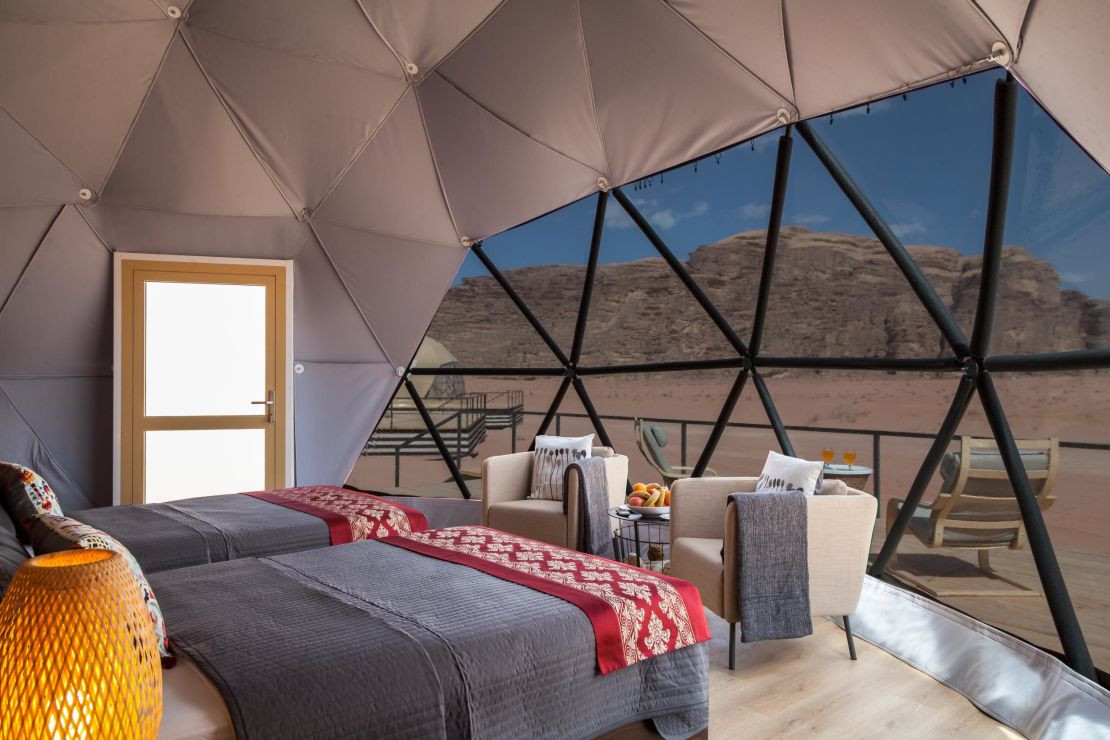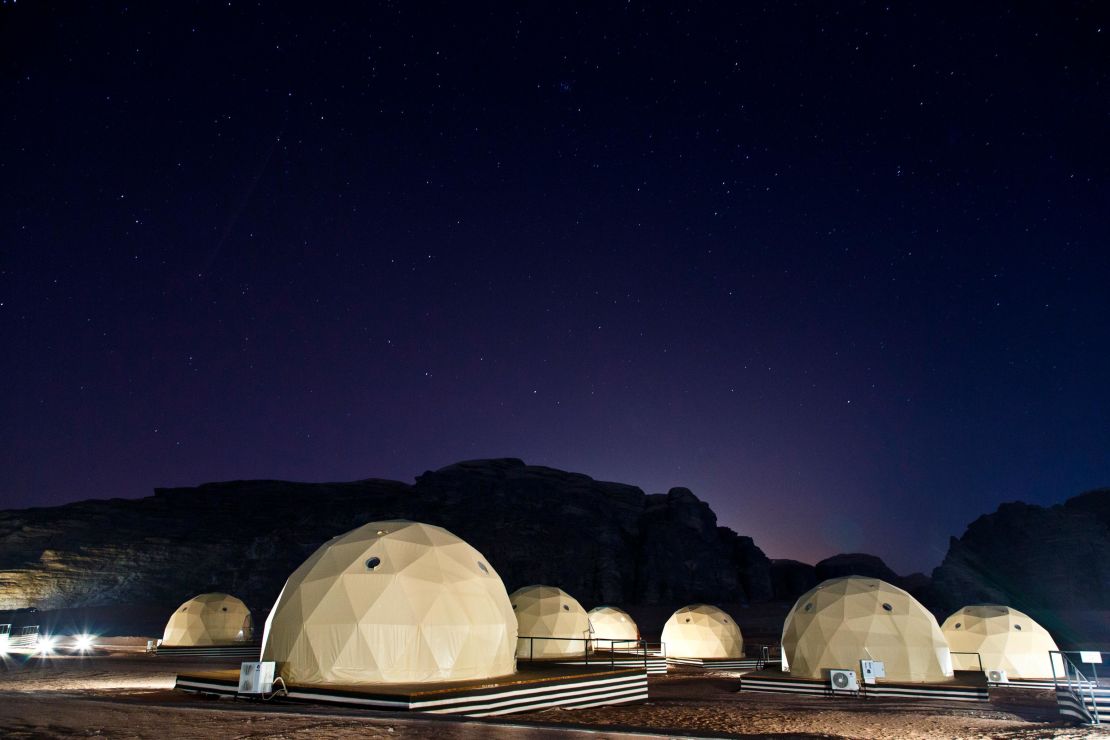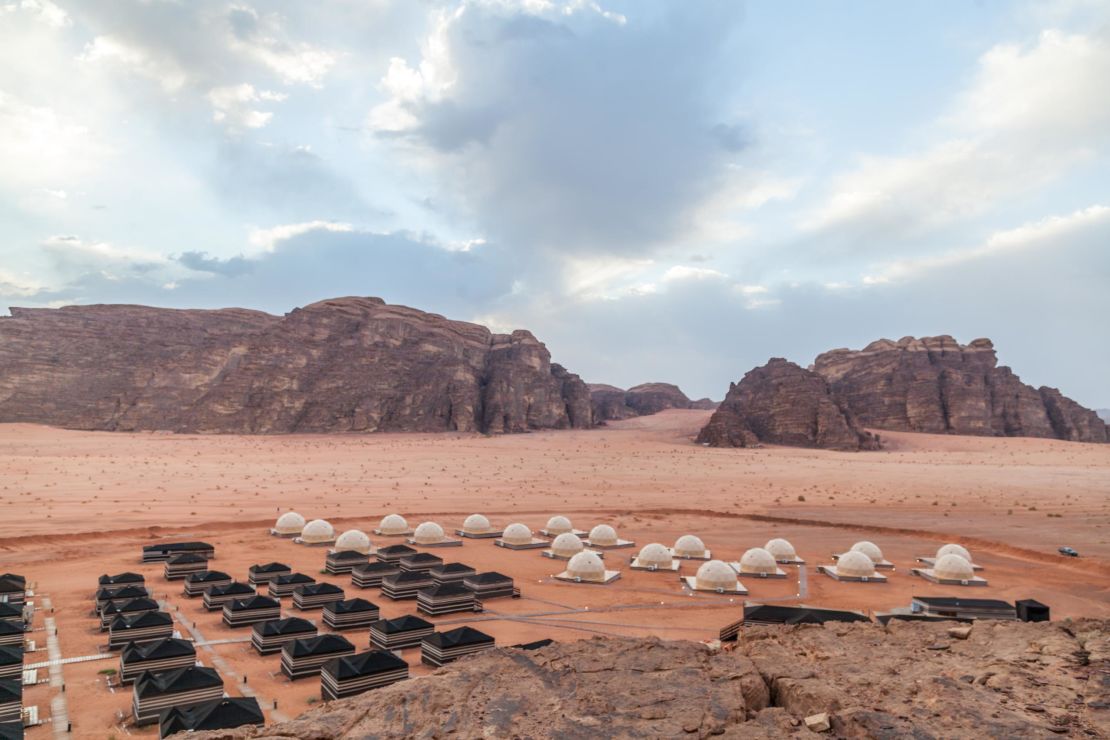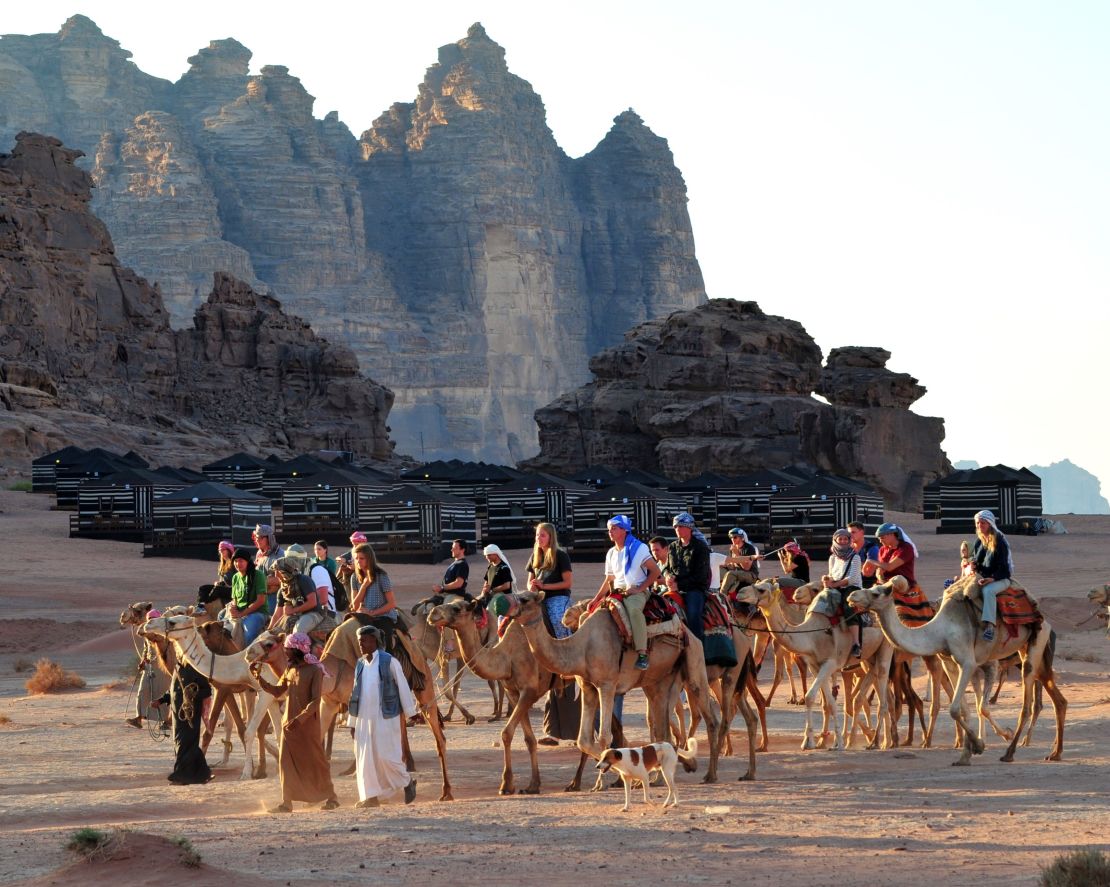“Vast, echoing and God-like.” That is how T.E. Lawrence, the British archaeologist and army officer who inspired the 1962 film “Lawrence of Arabia,” described Wadi Rum.
As you approach the wind-swept mountains that fiercely jut out of the burnt orange sand in Jordan’s largest desert, it’s easy to see what he meant. The landscape here is like something from another world.
So it’s perhaps no surprise that a hotel in Wadi Rum has just opened a dramatic Martian Experience in the heart of this wilderness, which lets visitors feel as though they have landed on the Red Planet.
It’s already attracting high-profile visitors. Last month, SpaceX CEO Elon Musk visited the Martian Domes and shared photos of the experience on Instagram.
Desert experience
It was Ridley Scott’s Oscar-nominated 2015 film “The Martian” that provided the inspiration for the 20 futuristic domes that are today eerily planted in the desert at Sun City Camp.
“When we began setting up the design (of the camp), it seemed as if the scenery around the domes with the vast desert was taken directly from the movie,” says the camp’s CEO and owner, Sultan Al-Nawafleh, of the film which sees Matt Damon’s character mistakenly left behind on Mars.
“We thought instead of going to Mars, you can come see it here in Wadi Rum.”

The Martian Domes are space ship-like tents with glass walls that provide visitors with panoramic views of the desert and surrounding mountains.
Custom-made in Germany for Sun City Camp, the domes cover 40 square meters and can sleep up to four people. They come with a bathroom including a shower, air conditioning (a luxury not usually provided to Wadi Rum campers) and a personal terrace.
The domes were introduced last year as an expansion of Sun City Camp, which opened three years ago. A one-night stay, including breakfast and dinner, costs about $320, although price vary upon request.

Starry, starry night
Al-Nawafleh has always been a travel junkie. After working as a tour guide he opened his own travel agency in Amman, before establishing Sun City Camp.
In the desert, he saw a gap in the market. While many tourists would visit Wadi Rum as a day trip from Petra, for example, Al-Nawafleh says staying in the desert overnight was not common, as there was a lack of comfortable accommodation.

Currently, Wadi Rum has approximately 162 tented camps, mostly owned by the local Bedouins, groups of nomadic Arab people who live in the desert. Only five of these are serviced like a hotel, including Sun City Camp.
When camping in the desert, Al-Nawafleh’s 17-year-old son, Yazan, complained about getting harassed by insects. He told his father: “There must be a way to enjoy this stunning view in comfort.”
With the Martian Domes, Al-Nawafleh says people have not only luxury, but they can experience the best part about Wadi Rum – its blazing starry night skies.
“I want my guests to see the beauty of nature at night in Wadi Rum,” he says. “The stars are amazing. The silence in the desert, it’s just mesmerizing.”
Arabian days
The days, however, can be as dramatic as those starry nights.
Guests at the camp can take part in activities including Arabian horseback and camel riding, buggy and jeep adventures, hot air ballooning and rock climbing. All of the activities are operated by the local Bedouins.

While the Bedouins that inhabit the desert maintain their semi-nomadic lifestyle, Al-Nawafleh says they were happy to work in an industry that promotes the beauty of their home.
“For them, it’s a new source of income that allows them to maintain their traditions and cultural values,” he says. “And that makes them extremely proud.”

Al-Nawafleh says the domes have magically transformed the Wadi Rum experience. He is in discussions with the governments of Saudi Arabia and Oman about establishing a similar camp in their deserts.
















